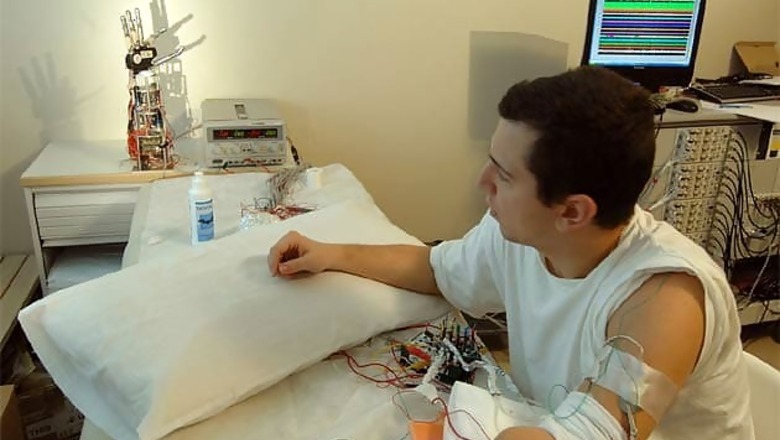
views
Boston: In a breakthrough, a bionic hand which allows the recipient to feel 'lifelike' touch sensations is to be transplanted on to a patient's arm for the first time in Italy.
The bionic hand will allow amputees to feel what they are touching and could introduce a new generation of artificial limbs with sensory perception.
In a pioneering operation, the robotic hand will be attached directly to an anonymous patient's arm for the first time this year at a hospital in Rome, scientists announced at the American Academy for the Advancement of Science conference in Boston on Sunday.
"It will be the first prosthetic that will provide real-time sensory feedback for grasping...the more sensory feeling an amputee has, the more likely you will get full acceptance of that limb," said Dr Silvestro Micera of the Ecole Polytechnique Federale de Lausanne.
"Being able to feel the hand as if it is their own will allow people to use it in a "more natural, rich and effective way," said Micera who developed the device.
Studies show that up to 50 per cent of hand amputees do not use their prosthesis regularly due to less than ideal functionality, appearance, and controllability.
But Micera is paving the way for new, smart prosthetics that connect directly to the nervous system. The benefits are more versatile prosthetics with intuitive motor control and realistic sensory feedback in essence.
Micera reported the results of previous work conducting a four-week clinical trial that improved sensory feedback in amputees by using intraneural electrodes implanted into the median and ulnar nerves.
This interface holds great promise because of its ability to create an intimate and natural connection with the nerves, and because it is less invasive than other methods.
It also provides fast, intuitive, bidirectional flow of information between the nervous system and the prosthetic, resulting in a more realistic experience and ultimately improved function.
"We could be on the cusp of providing new and more effective clinical solutions to amputees in the next years," Micera said in a statement.
Micera and colleagues tested their system by implanting intraneural electrodes into the nerves of an amputee.
The electrodes stimulated the sensory peripheral system, delivering different types of touch feelings. Then they analysed the motor neural signals recorded from the nerves and showed that information related to grasping could indeed be extracted.
That information was then used to control a hand prosthesis placed near the subject but not physically attached to the arm of the amputee.




















Comments
0 comment